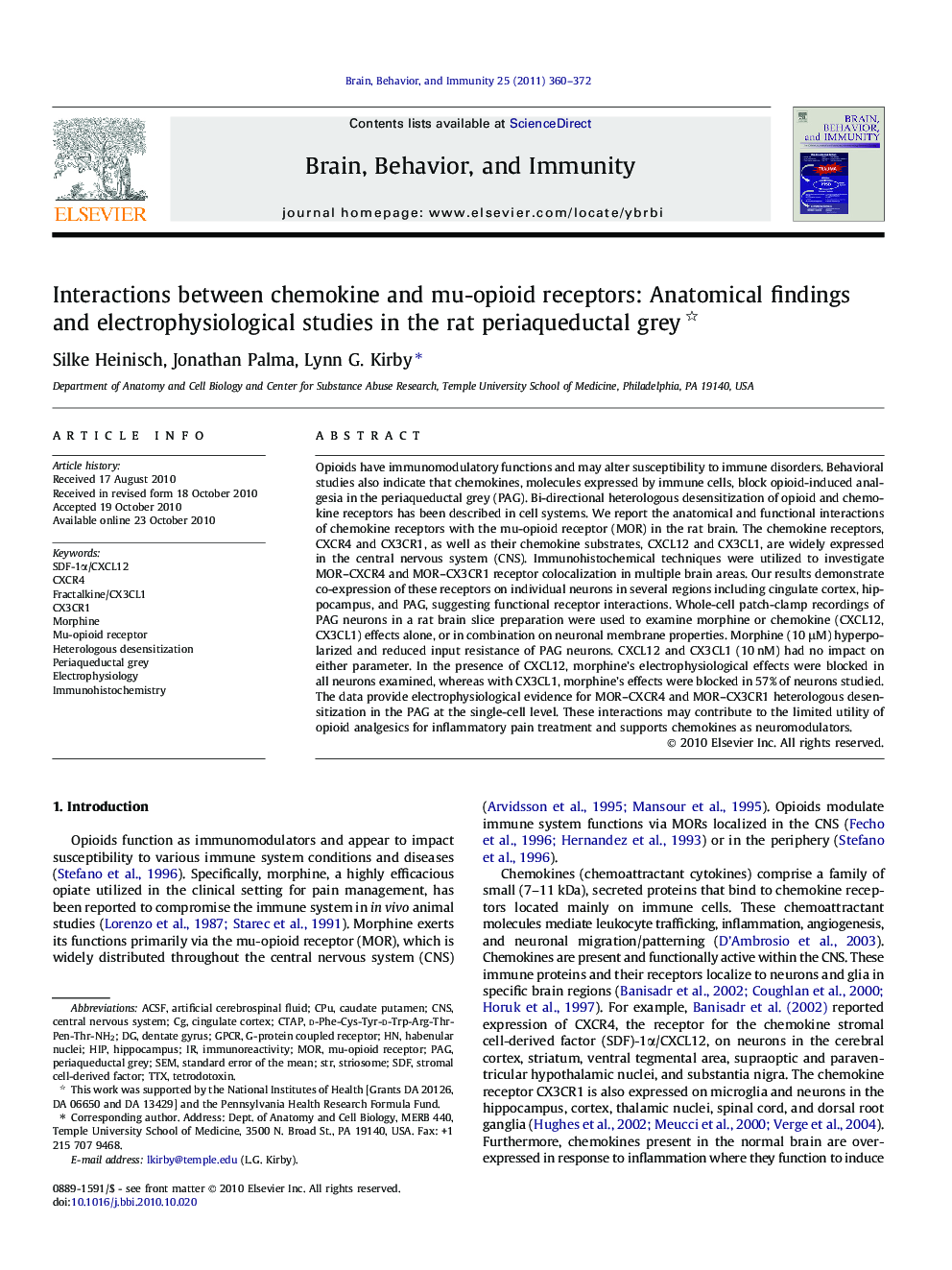| کد مقاله | کد نشریه | سال انتشار | مقاله انگلیسی | نسخه تمام متن |
|---|---|---|---|---|
| 922674 | 921055 | 2011 | 13 صفحه PDF | دانلود رایگان |

Opioids have immunomodulatory functions and may alter susceptibility to immune disorders. Behavioral studies also indicate that chemokines, molecules expressed by immune cells, block opioid-induced analgesia in the periaqueductal grey (PAG). Bi-directional heterologous desensitization of opioid and chemokine receptors has been described in cell systems. We report the anatomical and functional interactions of chemokine receptors with the mu-opioid receptor (MOR) in the rat brain. The chemokine receptors, CXCR4 and CX3CR1, as well as their chemokine substrates, CXCL12 and CX3CL1, are widely expressed in the central nervous system (CNS). Immunohistochemical techniques were utilized to investigate MOR–CXCR4 and MOR–CX3CR1 receptor colocalization in multiple brain areas. Our results demonstrate co-expression of these receptors on individual neurons in several regions including cingulate cortex, hippocampus, and PAG, suggesting functional receptor interactions. Whole-cell patch-clamp recordings of PAG neurons in a rat brain slice preparation were used to examine morphine or chemokine (CXCL12, CX3CL1) effects alone, or in combination on neuronal membrane properties. Morphine (10 μM) hyperpolarized and reduced input resistance of PAG neurons. CXCL12 and CX3CL1 (10 nM) had no impact on either parameter. In the presence of CXCL12, morphine’s electrophysiological effects were blocked in all neurons examined, whereas with CX3CL1, morphine’s effects were blocked in 57% of neurons studied. The data provide electrophysiological evidence for MOR–CXCR4 and MOR–CX3CR1 heterologous desensitization in the PAG at the single-cell level. These interactions may contribute to the limited utility of opioid analgesics for inflammatory pain treatment and supports chemokines as neuromodulators.
Research highlights
► Chemokine receptors (CXCR4 and CX3CR1) colocalize with the mu-opioid receptor in the rat brain.
► Chemokine–opioid receptor interactions are studied by electrophysiology in periaqueductal grey.
► The activation of chemokine receptors blocks morphine-mediated electrophysiological responses.
► Heterologous desensitization between these receptors occurs at the single-cell level in the brain.
► Interactions between these receptor classes may contribute to the immunomodulation of opioids.
Journal: Brain, Behavior, and Immunity - Volume 25, Issue 2, February 2011, Pages 360–372